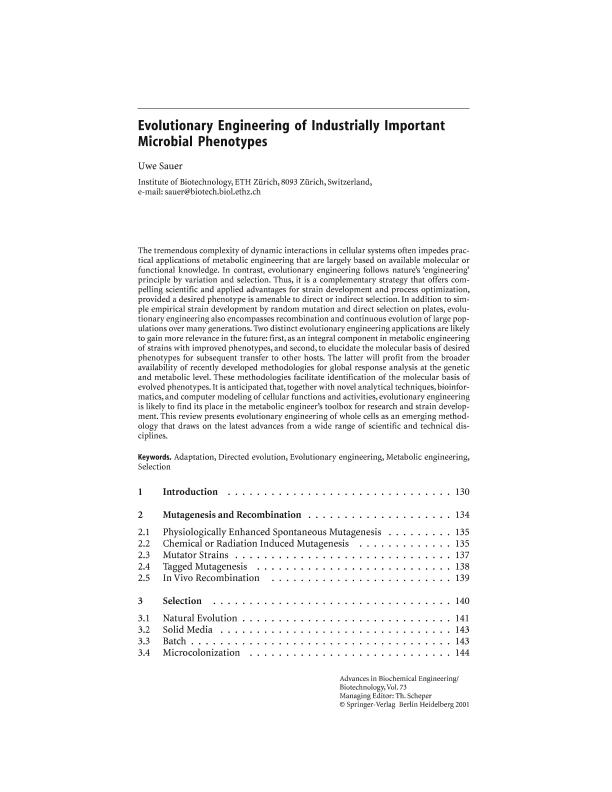Mostrar el registro sencillo del ítem
dc.contributor.author
Svetaz, Laura Andrea

dc.contributor.author
Zuljan, Federico Alberto

dc.contributor.author
Derita, Marcos Gabriel

dc.contributor.author
Petenatti, Elisa Margarita

dc.contributor.author
Tamayo, Gisellle
dc.contributor.author
Cáceres, Amando
dc.contributor.author
Cechinel Filho, Valdir
dc.contributor.author
Gimenez, Alberto
dc.contributor.author
Pinzón, Roberto
dc.contributor.author
Zacchino, Susana Alicia Stella

dc.contributor.author
Gupta Mahabir
dc.date.available
2018-07-24T18:41:50Z
dc.date.issued
2010-01
dc.identifier.citation
Svetaz, Laura Andrea; Zuljan, Federico Alberto; Derita, Marcos Gabriel; Petenatti, Elisa Margarita; Tamayo, Gisellle; et al.; Value of the ethnomedical information for the discovery of plants with antifungal properties. A survey among seven Latin American countries; Elsevier Ireland; Journal of Ethnopharmacology; 127; 1; 1-2010; 137-158
dc.identifier.issn
0378-8741
dc.identifier.uri
http://hdl.handle.net/11336/52986
dc.description.abstract
Ethnopharmacological relevance: This study reports the antifungal evaluation of 327 plant species (92 families and 251 genera) from seven Latin American countries which were selected on the basis of their reported ethnomedical uses and compared them with plants selected at random.
Aim of the study: (a) The main aim of this study was to investigate whether the probability of detecting antifungal plants is higher when plants have reports of ethnopharmacological uses related to fungal infections (PAU group) than when they are selected at random (PNAU group). (b) The second objective was to determine, within the PAU group, whether the probability of obtaining a positive result will be higher when the plants are tested against dermatophytes, than against yeasts or Aspergillus spp. (c) The third goal was to investigate, within all MICs≤1000g/mL, if the MICs displayed by the PAU group are comparatively lower than MIC values of the PNAU group; that is to say, if they can be expected more potent antifungal plants within the group of plants that have a history of traditional use related to fungal infections than when they do not have one.
Materials and methods: A five-stage process of documentation, evaluation and analysis of results was conducted: (1) selection of words that could describe the ethnopharmacological use related to fungal infections; (2) a survey of specialized literature in each country; (3) collection and preparation of an extract of each plant; (4) antifungal evaluation of the selected plants and (5) statistical analysis of the results. For the antifungal evaluation, the microbroth dilution assay recommended by the Clinical and Laboratory Standards Institute (CLSI, formerly NCCLS) was used against a panel of eleven human opportunistic and pathogenic fungi. For the statistical analysis the Pearson?s Chi Square test and the Score?s test were used.
Results: (a) A significantly higher probability of detecting plants with antifungal activity against at least one fungus was found within the PAU (40.3%) than the PNAU group (21.3%) (p < 0.01). (b) A similar higher
probability than in (a) (39.6% vs. 20.8%) was found when plants were tested against dermatophytes (p < 0.01) but not against yeasts or Aspergillus spp. (p > 0.05). (c) Within the detected antifungal plants
from both groups, plants of the PAU group displayed higher activities (lower MICs) than those of PNAU group against dermatophytes (p < 0.05) but not against yeasts or Aspergillus spp.
Conclusions: Considering that dermatophytes are the cause of superficial fungal infections, which can be easily detected and followed by traditional healers, our findings suggest that the ethnopharmacological
approach is useful in guiding the detection of antifungal plants in Latin America mainly for infections in which the pathological expression is obvious and, therefore, the cure can be clearly observed.
dc.format
application/pdf
dc.language.iso
eng
dc.publisher
Elsevier Ireland

dc.rights
info:eu-repo/semantics/openAccess
dc.rights.uri
https://creativecommons.org/licenses/by-nc-sa/2.5/ar/
dc.subject
Antifungal Activity
dc.subject
Ethnomedical Information
dc.subject
Latin American Plants
dc.subject.classification
Otras Ciencias de la Salud

dc.subject.classification
Ciencias de la Salud

dc.subject.classification
CIENCIAS MÉDICAS Y DE LA SALUD

dc.title
Value of the ethnomedical information for the discovery of plants with antifungal properties. A survey among seven Latin American countries
dc.type
info:eu-repo/semantics/article
dc.type
info:ar-repo/semantics/artículo
dc.type
info:eu-repo/semantics/publishedVersion
dc.date.updated
2018-07-23T13:51:44Z
dc.journal.volume
127
dc.journal.number
1
dc.journal.pagination
137-158
dc.journal.pais
Irlanda

dc.journal.ciudad
Shannon
dc.description.fil
Fil: Svetaz, Laura Andrea. Consejo Nacional de Investigaciones Científicas y Técnicas. Centro Científico Tecnológico Conicet - Tucumán. Instituto de Química del Noroeste. Universidad Nacional de Tucumán. Facultad de Bioquímica, Química y Farmacia. Instituto de Química del Noroeste; Argentina. Universidad Nacional de Rosario. Facultad de Ciencias Bioquímicas y Farmacéuticas. Departamento de Química Orgánica. Área Farmacognosia; Argentina
dc.description.fil
Fil: Zuljan, Federico Alberto. Consejo Nacional de Investigaciones Científicas y Técnicas. Centro Científico Tecnológico Conicet - Tucumán. Instituto de Química del Noroeste. Universidad Nacional de Tucumán. Facultad de Bioquímica, Química y Farmacia. Instituto de Química del Noroeste; Argentina. Universidad Nacional de Rosario. Facultad de Ciencias Bioquímicas y Farmacéuticas. Departamento de Química Orgánica. Área Farmacognosia; Argentina
dc.description.fil
Fil: Derita, Marcos Gabriel. Consejo Nacional de Investigaciones Científicas y Técnicas. Centro Científico Tecnológico Conicet - Tucumán. Instituto de Química del Noroeste. Universidad Nacional de Tucumán. Facultad de Bioquímica, Química y Farmacia. Instituto de Química del Noroeste; Argentina. Universidad Nacional de Rosario. Facultad de Ciencias Bioquímicas y Farmacéuticas. Departamento de Química Orgánica. Área Farmacognosia; Argentina
dc.description.fil
Fil: Petenatti, Elisa Margarita. Universidad Nacional de San Luis. Facultad de Química, Bioquímica y Farmacia. Departamento de Farmacia. Area de Farmacognosia; Argentina
dc.description.fil
Fil: Tamayo, Gisellle. Instituto Nacional de Biodiversidad; Costa Rica
dc.description.fil
Fil: Cáceres, Amando. Universidad de San Carlos; Guatemala
dc.description.fil
Fil: Cechinel Filho, Valdir. Universidades do Vale do Itajaí; Brasil
dc.description.fil
Fil: Gimenez, Alberto. Universidad Mayor de San Andrés; Bolivia
dc.description.fil
Fil: Pinzón, Roberto. Universidad Nacional de Colombia; Colombia
dc.description.fil
Fil: Zacchino, Susana Alicia Stella. Consejo Nacional de Investigaciones Científicas y Técnicas. Centro Científico Tecnológico Conicet - Tucumán. Instituto de Química del Noroeste. Universidad Nacional de Tucumán. Facultad de Bioquímica, Química y Farmacia. Instituto de Química del Noroeste; Argentina. Universidad Nacional de Rosario. Facultad de Ciencias Bioquímicas y Farmacéuticas. Departamento de Química Orgánica. Área Farmacognosia; Argentina
dc.description.fil
Fil: Gupta Mahabir. Centro de Investigaciones Farmacognósticas de la Flora Panameña; Panamá
dc.journal.title
Journal of Ethnopharmacology

dc.relation.alternativeid
info:eu-repo/semantics/altIdentifier/url/https://www.sciencedirect.com/science/article/pii/S0378874109005947
dc.relation.alternativeid
info:eu-repo/semantics/altIdentifier/doi/https://dx.doi.org/10.1016/j.jep.2009.09.034
Archivos asociados
